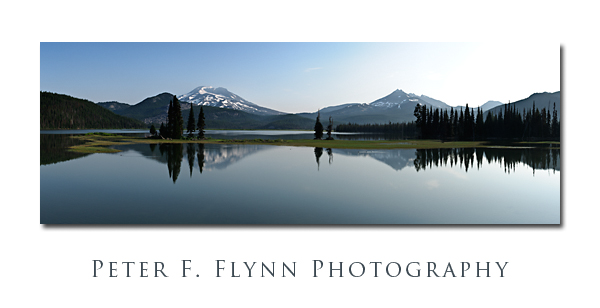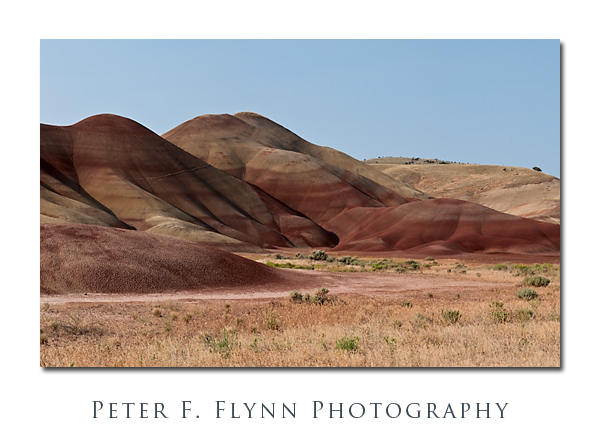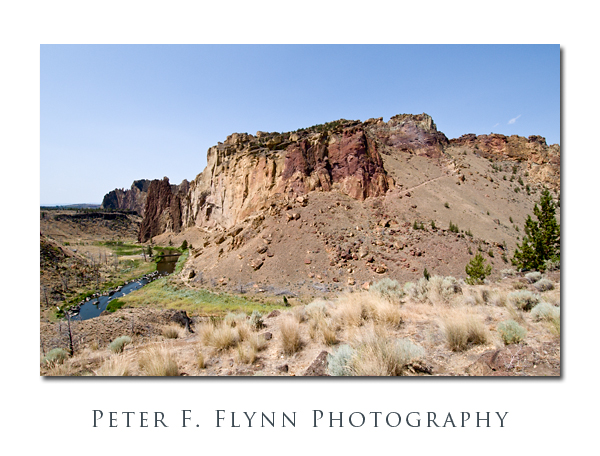Ray Atkeson. For native Northwesterners the name is synomous with outdoor photography. During the 70’s and 80’s Atkeson published a series of color coffee table books that pretty much defines the genre. For those of an earlier vintage, you may recognize Atkeson as a renowned ski photographer – yeah, it’s a popular style-type, and Atkeson’s BW prints are some of the very best images of this form made by anyone at anytime – and done mostly using a 4×5 Speed Graphic camera that he toted around in the era before ski-lifts – folks were tougher in the olden days… I actually own a couple of prints meself – night shots at Timberline Lodge.
In honor of his stature as Photographer Laureate of Oregon, a point on the south shore of Sparks Lake has been named after Atkeson. It is a very pleasant spot, reached easily by walking a short distance along a paved trail from the boat launch parking lot at the southeastern corner of the lake. Near Atkeson Point you can setup to try your skills against the morning light, South Sister and Broken Top. Warning: it is mostly cold here, even in summer, right around dew-point temperatures, and the light is curiously fickle. It is nevertheless one of the most lovely spots on Earth.
The image above of South Sister and Broken Top with Sparks Lake in the foreground – an Atkeson classic – was recorded on July 22, 2008, at 08:40 hrs, using the Nikon D300 and the AF-S NIKKOR 24-70mm f/2.8G ED lens at 35mm (52 mm full-frame equivalent). Exposure was f/16 at 1/80s, ISO 200. The image is a crop from a panorama generated using a series of 17 images overlapping by ~30%. The images were processed identically using a camera profile set at the DX2 Mode 3 (landscape), and clarity set up to +43 to enhance the detail up on South Sister. The stitch was made using AutoPano Pro. The composite image was futher processed by copying the image to a layer, and changing the blending mode to multiply. A mask was then added to the layer to install a gradient that emphasized the darkening effect of the multiply layer in the upper half of the image. As usual, I’m happy to answer specific questions about the processing.


